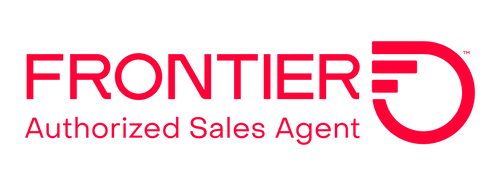In today’s ultra-connected world, it’s essential to stay online for work, for entertainment, or even to stay in touch with friends and loved ones. Online connections are vital for everything from medical needs to education to shopping and so much more. One crucial technology that helps us stay online and connected is the mobile hotspot. What is a hotspot? And how does it differ from public Wi-Fi? Let’s take a look at this game-changing tech, its functionality, and how to make the most of hotspots.
Common Hotspot Terminology
Before we dive into the details, it can be helpful to understand some of the common terms associated with what is a hotspot:
- Hotspot: A physical location that allows people to access the internet, typically using Wi-Fi.
- Mobile hotspot: A device or feature that allows you to connect to the internet using cellular data and then share that connection with other devices (e.g., laptops or tablets).
- Public Wi-Fi: Internet access provided in public places like cafes, airports, hotels, and libraries (often for free or with purchase).
- Tethering: Using your mobile device to share its internet connection with other devices.
- SSID (Service Set Identifier): The name of a wireless network.
- WPA/WPA2 (Wi-Fi protected access): Security protocols used to protect a Wi-Fi network.
How Hotspots Work
Hotspots work by providing wireless internet access through Wi-Fi. When it comes to mobile hotspots, they use cellular data to create a Wi-Fi network that other devices can then connect to.
Many smartphones have built-in hotspot capabilities (smartphone hotspots) that allow you to share your phone’s data connection with other devices. There are also dedicated mobile hotspot devices, which are specifically designed to provide internet access through cellular networks. You may also have a home hotspot. These take advantage of your home internet connection to create a Wi-Fi network, which can then extend the reach of your internet.
Making the Most of Mobile Hotspots
To get the most out of your mobile hotspot, consider these tips from the pros. The first is location, location, location. That is, make sure your hotspot device is placed in an area with a strong signal to ensure the highest performance.
In today’s day and age, a strong, secure connection is even more important than a strong signal. Use a strong password and WPA2 encryption to protect your hotspot from unauthorized access. Security and performance can also be improved by regularly updating your device and firmware. The good news is that mobile hotspots are typically more secure than public Wi-Fi as they use cellular networks, but it’s still vital to protect your data.
In addition, to avoid unexpected charges or throttling, it’s important to keep an eye on your data usage. Speed can also be impacted by how many devices are connected to your hotspot. In other words, the more connected devices, the slower the speeds. So, limit the number of connected devices to only those that are essential.
Mobile hotspots are typically effective for everyday internet use, such as browsing, streaming, and video calls. However, activities that use a lot of data, such as downloading large files or streaming in high definition, tend to be slower, especially if on a busy network.
The Costs and Available Mobile Hotspots
The costs of using a mobile hotspot can vary drastically depending on your provider and plan. For example, numerous cellular providers offer hotspot capabilities as part of your plan with no additional costs. They do, however, often come with data caps. As 5G plans continue to roll out, we can expect faster speeds and the ability to handle more devices at the same time. The tradeoff, though, is the cost. These plans tend to be more expensive.
You can also find some travel plans available for those who enjoy international travel for work or pleasure. These plans can often be more cost-effective than using your domestic plan when you’re far from home.
Finally, you can find data plans that are designed with hotspot use in mind. These often provide higher data limits, so they’re appealing (and more affordable) for people who use their hotspots a lot.
Data Speeds and Restrictions
Again, the speed and amount of data available have a lot of variability. It can depend on the strength of your cellular signal, the type of cellular network (e.g., 4G LTE vs. 5G), and the number of devices currently connected as well as the location and network congestion. Generally, however, you can expect speeds ranging from a few Mbps (megabits per second) to over 100 Mbps with a 5G connection.
It’s also important to be aware of the restrictions that can come with mobile hotspots. For instance, many mobile plans have data caps, and once you go above that cap, speeds may be throttled, or you may get unexpected charges.
If you’re in an area with limited or no coverage (such as in remote or rural areas), you may also find limitations with your hotspot. The effectiveness of the hotspot depends on cellular coverage.
Another concern? Batteries. Using a smartphone as a hotspot can drain the battery quickly. So remember to keep a charger close at hand when using your mobile hotspot.
What Is a Hotspot Takeaways
Understanding what a hotspot is and how it works can help you make the most of this game-changing tech. Whether you’re using a smartphone, a dedicated mobile hotspot device, or a home hotspot, staying connected when you’re on the go has never been easier.
Just remember to consider your data plan (and if you need to upgrade), secure your connection always, and be mindful of limitations to enjoy seamless internet access virtually anywhere you go.
By following the tips and choosing the right plans for your needs, you can ensure you stay connected and productive, no matter where your adventures take you.











